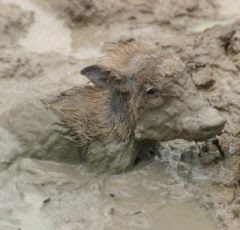At 2.5 million acres the federally protected area is part of the largest road less area left in the lower 48 states It's mountains, rivers and plateaus are home to otters, elk, deer and coyotes, blue birds, Chinook salmon and bighorn sheep and countless others including 9 newly-restored wolf populations who roam freely raising their young and hunting together. Isaac Babcock spent 13 years prior to marrying Bjornen working with the Nez Perce Tribe in Central Idaho in the wolf reintroduction program in the area so he knows it and its residents well. The two document their adventure as they go through the seasons. Near its end Bjornen, an incredible woman as you'll learn if you ever get the chance to see this stunningly beautiful documentary, says, "I found something I didn't know I'd lost".
It's encouraging that areas like this are allowed to exist, encouraging that the remnants of our wild past are in some small way protected from us. Important and beautiful it is, but wilderness it isn't. As the documentary mentions every year hundreds of forest service workers build and maintain the many miles of trails used by horse excursions, adventurous hikers and scientists like Isaac and Bjornen. In addition some ranches that existed before 1980 when the US government protected the area still exist there.
Wilderness, where the flora, fauna, microbes, minerals, forces and faeries live in their interconnected, interdependent oneness, is very rare today on this small blue planet overrun by a species of rogue primates. The dichotomy between human materialistic growth demands and the deeper Gaian reality has created a situation where places that preserve some of the ancient wilderness's genetic inheritance, like the Frank Church-River of No Return Wilderness, is probably the best we can hope for. Its important to remember that this situation is temporary It's important not to forget that unless we humans learn to live in harmony with our Gaian cousins we will, sooner or later, be reduced to a thin shiny line in the sedimentary record.
My best friend Pancho is seldom interested in TV but last night every time the wolves howled her ears stood up and she jumped to attention. It occurred to me that she remembered some of what we've forgotten.



